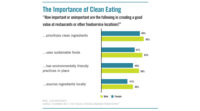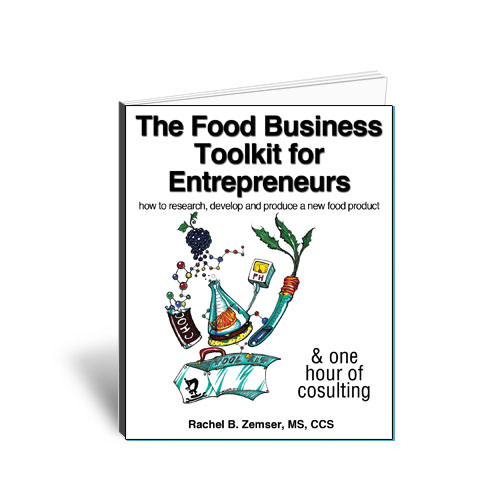2019 FOODSERVICE NEW PRODUCTS ANNUAL | R&D STRATEGY + SALES
Leveraging E-commerce and Distributor Sales to Convey Information
Go the last mile to show pride in new product offerings.

After developing a new food or drink, manufacturers need to properly communicate and "sell" that new item's benefits in e-commerce and/or distributor sales channels.
PHOTO COURTESY OF: GETTY IMAGES
Developing new foodservice products? Here’s a case where cross-functional conversations are important and product data can be just as valuable as ingredients.
In this instance, new product developers can be better served with a clearer downstream view of what’s truly happening to move the needle in sales and the supply chain. Ultimately, such understanding can help improve a new product’s odds for success. It’s important because even the best new product needs to be visible to the foodservice operator—or it will never gain traction in the marketplace.
Let’s step back and briefly review the basics. Foodservice manufacturers have two primary sales channels to reach operator customers. The first, e-commerce, is the emerging channel and the second, the distributor sales representative (DSR), is the more traditional. Both channels present unique challenges and opportunities.
Despite being vastly different channels, they also share a common trait. That is to say that for the most part, they both are out of the manufacturer’s control. Instead, these channels are the domain of the distributor and are subject to a distributor’s priorities and strategies. However, if the manufacturer properly activates both channels, this can be a competitive advantage.
In an effort to aid foodservice manufacturers with the e-commerce and DSR channels, the International Foodservice Manufacturers Association (IFMA) published “The Modern Operator report,” in collaboration with research partner, Datassential.
This report is the output of surveys conducted with more than 1,200 foodservice operators across multiple segments. It explores the attitudes that operators exhibit when they are deciding how to make their purchases. Likewise, it highlights the many diverse influences that impact purchasing decisions. This report is one deliverable from IFMA’s larger initiative, Food Future 2025, and is available for download for all IFMA members.
E-Commerce
In his book, What the Dormouse Said, author John Markoff noted that the “seminal act of e-commerce” was a cannabis sale between students at Stanford and MIT using a precursor to the internet called ARPANET. That sale took place 47 years ago, in 1972. And, according to Wikipedia, the first B2B e-commerce transaction took place in 1981. Despite this lengthy history, we, in foodservice, still view e-commerce as an emerging channel.
According to IFMA’s New Operator Landscape, only 58% of foodservice transactions take place over the internet even though the vast majority of foodservice purchases are not made in a physical store.
Despite being a laggard, the foodservice industry is adopting e-commerce at a brisk pace. Sysco recently reported that 53% of its locally managed customers place their orders online. Fellow broadliner US Foods says that almost 60% of their independent restaurant customer sales go through its online portal. Only three years ago, that US Foods number was south of 45%.

Online is the most often used method for placing a foodservice order, with
a sales rep being a secondary option.
SOURCE: International Foodservice Manufacturers Association, Modern Operator Report
So, although it might have taken a while, the inevitable shift to e-commerce is happening and foodservice manufacturers will need to adapt to ensure that their products are easy to buy through their distributors’ web portals.
The primary hurdle facing foodservice manufacturers in this endeavor is the efficient transfer of reliable product information to their distributor partners. Each distributor has different data and image specifications—so there is not a “one-size-fits-all” solution. In addition, when a manufacturer launches a new product, they need to ensure that the new product information is communicated to the distributor and updated across all ordering platforms.
With thousands of individual SKUs, this is a complex and difficult process. However, the alternative of providing incomplete or incorrect product information is no longer an option.
GS1 US provides a platform for a “common language” exchange of product data between manufacturers, distributors, and operators.
Kevin Otto, GS1’s senior director of community engagement, notes, “Without an adherence to GS1 Standards, manufacturers and distributors are essentially not speaking the same language. They are potentially putting their reputations at risk by taking a gamble on the quality of their data—it needs to be complete, accurate and consistent.”
Adherence to GS1 standards benefits the manufacturer because all GS1 compliant distributors can accept and display the necessary product information needed to show up correctly on an e-commerce site. For R&D, this means that accurate product data can be just as important as the new product being brought to market. A distributor will require this data before they even consider whether or not to stock the new SKU.
Bill McClellan is vice president at Dawn Foods, a Jackson, Mich., bakery foods processor of everything from ingredients to finished, frozen baked goods.
He notes, “Using GS1 Standards gives us the ability to deliver more information to our customers about our products and has helped improve our communication of accurate weight, size, nutritional information, allergens and preparations instructions.”
All that information then is relayed to the operator through a distributor’s e-commerce portal.
Another advantage of having quality data and images is that a manufacturer can then use emerging digital media channels to promote their new product offering. Operator Direct Connect is a prime example of a platform that manufacturers can use to enhance the awareness of their new product without having to rely on a distributor’s e-commerce platform.
Despite all the conveniences of ordering through an e-commerce portal, there are still foodservice operators that prefer to place their orders in-person or over the phone. One of the primary reasons that operators don’t use e-commerce channels is because they feel that they lose their ability to negotiate on price.
Price flexibility is a unique feature to the foodservice marketplace and is most prevalent in the independent restaurant segment where contracted pricing is not common. The fear with the operator is that, if they are using an e-commerce portal, they might be missing out on some good pricing that only their sales rep knows about.
On the flip side, foodservice operators that conduct most of their purchases off a contracted order guide are only placing their orders through an online portal. The majority of these operators are in the on-site segments, such as healthcare and lodging.
The convenience of being able to place an order at any time of the day—combined with the ability to search products—is why most of these Group Purchasing Organization (GPO) affiliated operators prefer to use an e-commerce portal.
With this in mind, if a manufacturer has a product that is approved on a GPO contract, that product needs to be easily found using a portal’s search function. If it’s not, it might be available to a GPO member, but they don’t know it exists because they cannot find it easily on the distributor’s e-commerce portal. Or, they might find it—but if the information they need is not available—such as allergens, they won’t buy the product.
Distributor Sales Reps
The distributor sales rep is almost the complete opposite of the e-commerce channel, but also is just as important, and, in certain segments, more important for the foodservice manufacturer. The DSR is the single most influential entity on an operator’s purchasing decision, significantly higher than a manufacturer or broker rep.
Naturally, the challenge for the foodservice manufacturer is that the DSR works for the distributor, so getting their attention and then influencing their sales efforts is difficult. This is particularly true if you are a nationally branded manufacturer and are working with the large broadline distributors that are emphasizing their private label brands with extra incentives for their DSRs. Then there is the fact that a DSRs book of products is thousands of SKUs deep and then it’s difficult to get share of mind with so much that they have to sell.

A distributor sales rep is the most trusted person that an operator works with outside of their own business.
SOURCE: International Foodservice Manufacturers Association, Modern Operator Report
Manufacturers faced with this dilemma oftentimes turn to two tactics to gain DSR attention: training and/or financial incentives, or spiffs. Both are more effective than doing nothing, but both also have a low likelihood of success since they often are executed in sub-optimal ways.
Training often occurs at a DSR sales meeting either before the meeting starts or during the lunch break. In neither instance is the DSR focused exclusively on the training message. With no particular reason to be invested in the training (except maybe a free meal), the DSR is rarely convinced to focus on selling the manufacturer’s products. In an effort to be more effective, the training should do its best to align with that distributor’s overall sales strategy and include an exercise that the DSR must complete.
Furthermore, it is recommended to have a training team that specializes in delivering DSR trainings. The manufacturer only gets a short amount of time to deliver their important message; have the message delivered by someone who knows how to teach salespeople.
Sales Performance Incentive Funding Formulas (spiffs) are a default tool used to meet the DSRs inevitable question, “What’s in it for me? And some spiffs can be effective, but many are lost in the shuffle of numerous incentives that are put in front of DSRs on a weekly basis.
Although a manufacturer can stand out from the crowd by having an above average payout, this can be costly and rarely delivers a long-term return on investment. Instead, contests are a recommended incentive since they use innate competitive spirit among salespeople. Additionally, the weekly tracking and reporting on the contest keeps the manufacturer’s message front and center for the duration of the event. However, in order to make the contest a success, the contest rules must be easy to understand and the weekly reporting must be concise and accurate.
Successfully launching a new product through a DSR requires more than just developing an innovative ingredient, food, beverage, or tool. R&D must prepare a full story of why the product is innovative and how it will help the operator. A sell sheet with some product specifications is not enough to convince a DSR to sell the new product. They need to want to sell the product for more reasons than just a spiff.
A foodservice manufacturer should have a well thought-out and direct strategy to meet the two most important sales channels in foodservice, e-commerce and the DSR. Neither channel can be left to chance and both require investments to make them effective.
E-commerce investments come in the form of high-quality images, accurate product information, and compliance with GS1 standards. Additionally, working with high volume distributors to ensure the search options are optimized will make it easier for operators to find a manufacturer’s product. DSR investments come in the form of enhanced training skills and sales contests that are fun for the DSR, but also encourage
new behaviors.
A manufacturer that finds the optimized level of investment and execution of these two channels will be able to gain a competitive advantage in the foodservice marketplace.
Looking for a reprint of this article?
From high-res PDFs to custom plaques, order your copy today!






